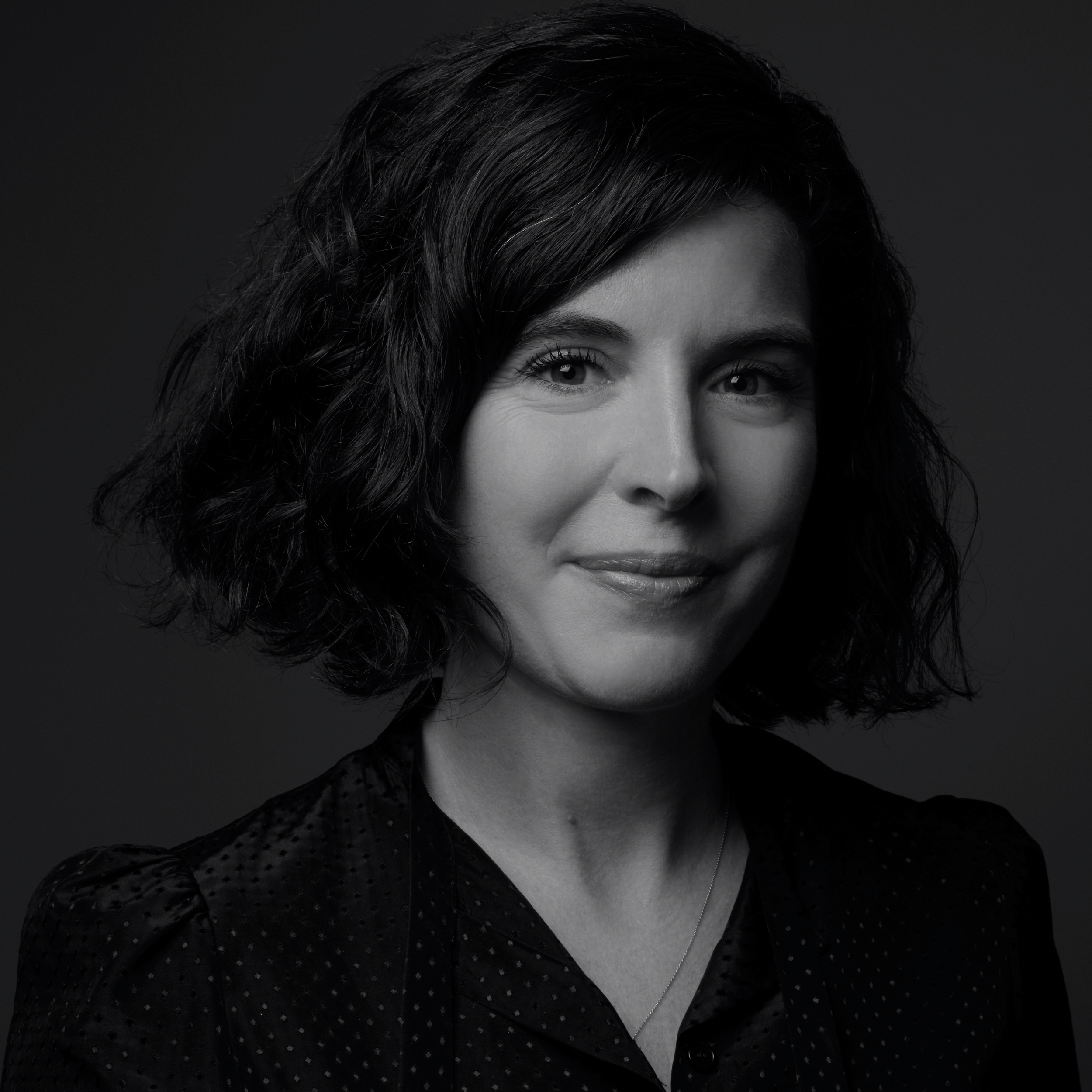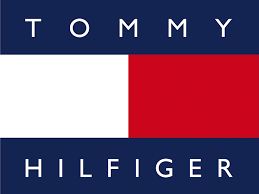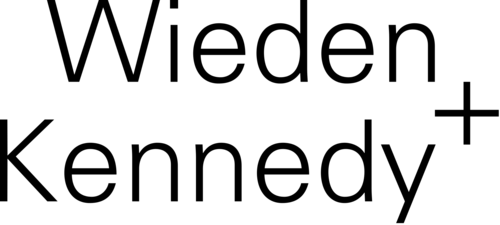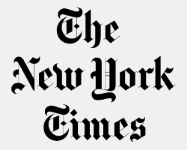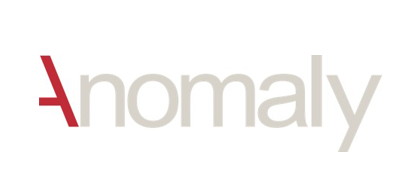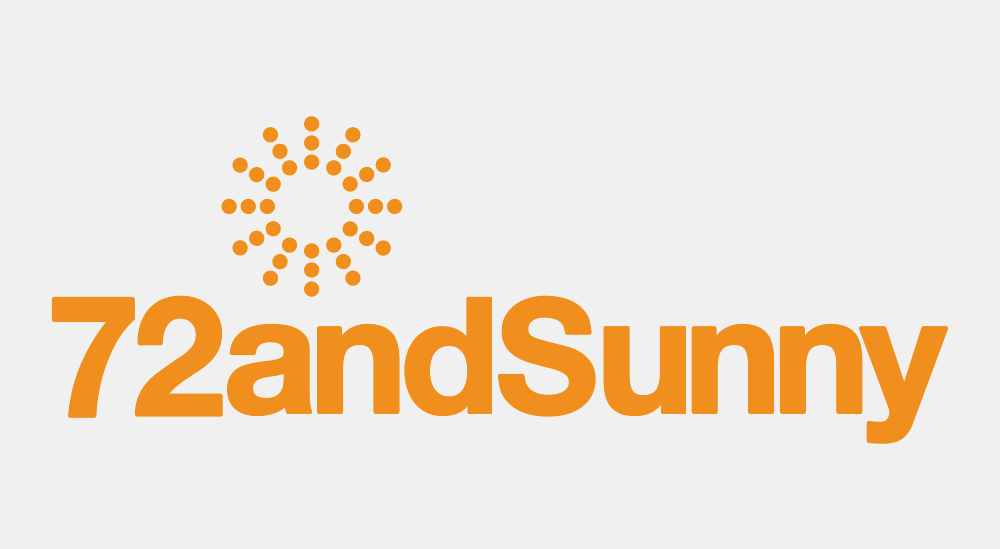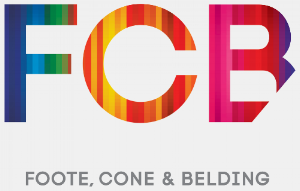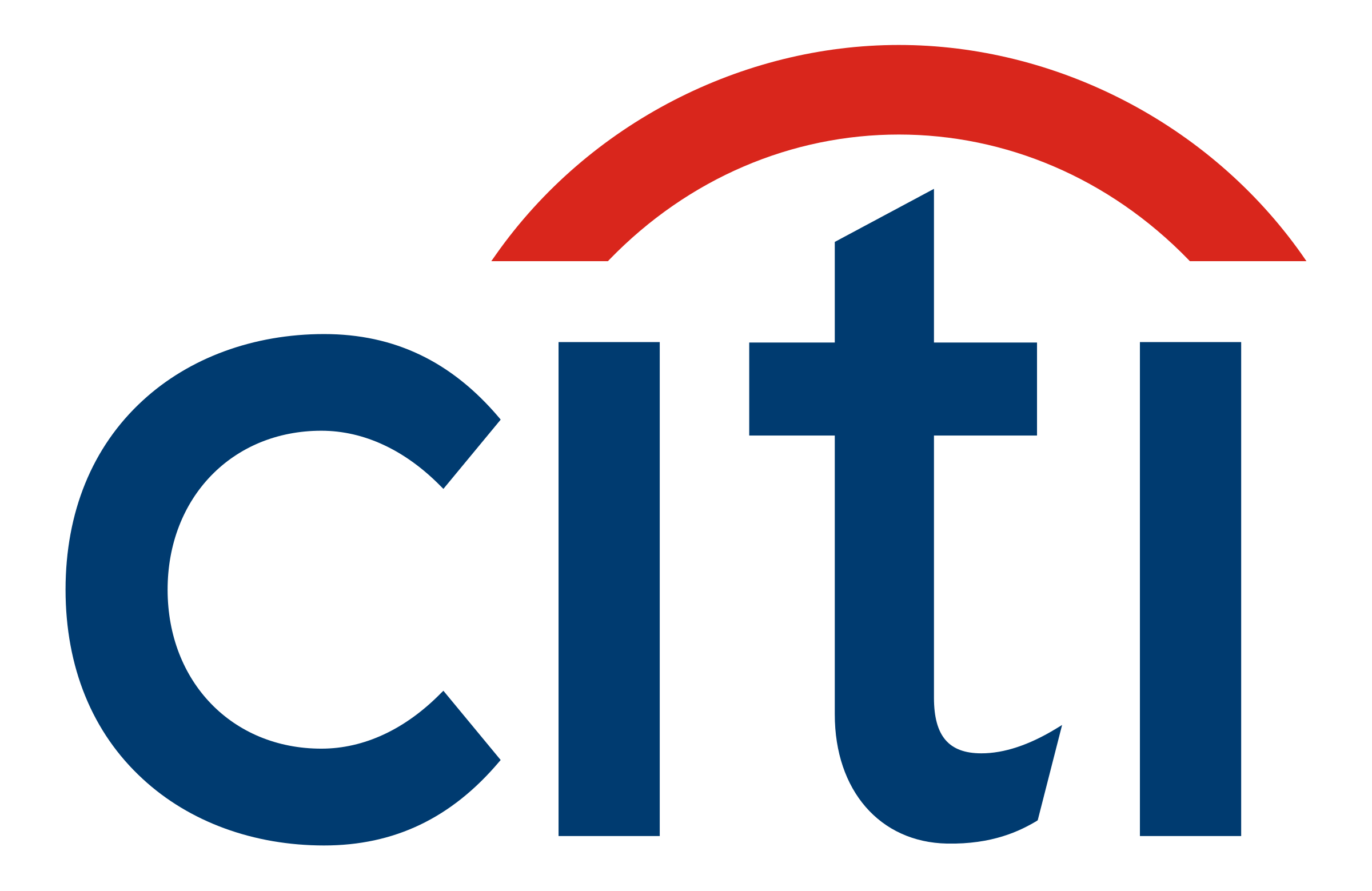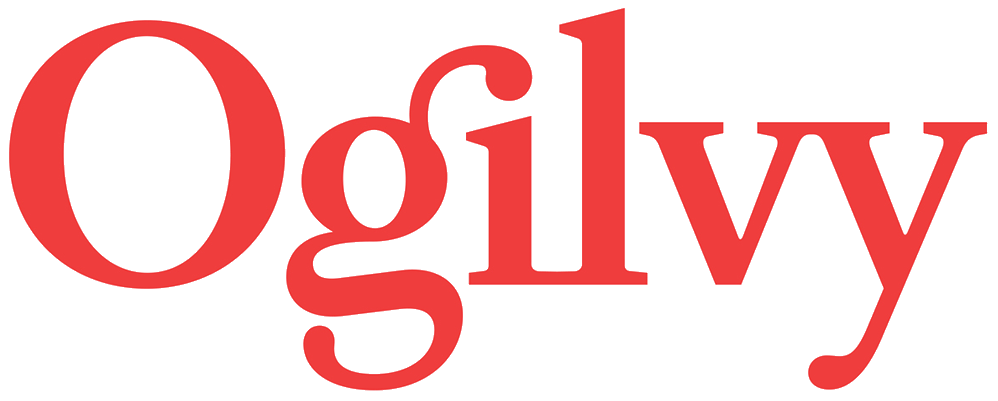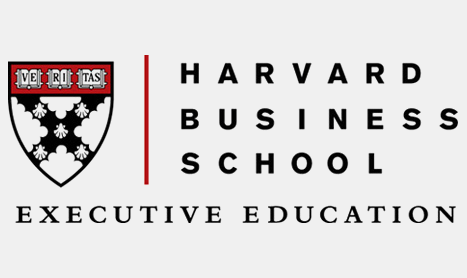Lisa Smith of JKR
How Well Do You Know Yourself?
"FEARLESS CREATIVE LEADERSHIP" PODCAST - TRANSCRIPT
Episode 267: Lisa Smith
Here’s a question. How well do you know yourself?
I’m Charles Day. I believe that leadership offers us the greatest opportunity of our lives, to make a difference. I’m asked to help leaders discover what they’re capable of, and then to maximize their impact. Welcome to the intersection of strategy and humanity.
This episode’s conversation is with Lisa Smith. She’s the Global Executive Creative Director at JKR.
Fast Company have called her a visionary designer, and they cite in particular her work for Burger King, the Victoria & Albert Museum in London, Chobani, and the Metropolitan Museum of Art. They described her work as unique because “it has consistently changed the visual landscape, disrupted popular aesthetics, and started trends of its own.”
When you meet Lisa, her energy is infectious. As you’ll hear in our conversation, she wants to make a difference.
She also knows herself well enough to have learned that her energy sometimes needs an adapter:
“And when I get the most sort of overwhelmed that can be so brutally direct, and I've really had to have a lot more empathy, read the room, learn to not be such a bulldozer. And someone once told me, if you're going to bulldoze and you know you are about to do it, just apologize as you push the way through, ‘Hey, I am coming through, coming through. We are going to make this happen.’”
We are driven by instincts, starting with the genetic code that we must survive.
Against that context, self awareness comes second, and is usually filtered and diluted by other impulses.
The ability to stand back and accurately reflect on the impact we are having, in real time, is a lifelong quest for most of us.
But when you meet someone who has learned to understand themselves multi-dimensionally, who sees themselves in mirrors that reflect all the angles, the good and the works in progress, then our trust in that person rises like the proverbial tide — predictably and visibly.
That remains true, even if, especially if, they show up as less than their best selves, but can acknowledge that, openly and honestly.
Lisa is not alone in her ambition sometimes turning her into “a bulldozer.”
She is rare in her ability to see it happening before it happens, and to warn those around her that her form of leadership encompasses all the elements of “lead, follow, or get out of the way.”
Here’s Lisa Smith.
Charles:
Lisa, welcome to Fearless. Thank you for coming on the show.
Lisa Smith:
Oh, thank you for having me. This is exciting.
Charles:
Another episode in the lobby at the Majestic Hotel during my annual visit to Cannes. Let me start where I traditionally start, which is, when did creativity first show up in your life? When are you first conscious of creativity as a force in the world?
Lisa Smith:
It's an interesting one. I think it's a lot later than a lot of people would say. I spent most of my childhood and teenage years much more into sports. I thought I wanted to be a sports player, or a teacher, or be in the army, or be a police woman. And it wasn't until I was maybe more like 17 and I wasn't doing that well in school, because I was probably mucking around playing sports and things like that. But then I had this moment where I was like, I don't think I want to be a teacher and wake up every Saturday morning taking kids out in the freezing cold British weather to play sports. And I was like, what else am I good at? And I always loved drawing and making and textiles and fashion and thrifting, and things like that.
And someone told me about an art foundation course that you could do. And it turned out that I failed most of my A levels. I did not love school at all, so I was not academic in any shape or form. I was never really there. My mom said I went about half. So then I applied to this art foundation, but they said I didn't have enough work in my book. And so they sent me a project over the summer where I drew a car engine, like, literally photographic drawing, over the whole summer, and I submitted that. And then they said, “Well, you can come on the foundation because you can draw.” And then my whole world changed. Like I could do jewelry making, printmaking, photography, collage, drawing with, and painting with, my elbows and my feet. And I loved it. My whole world changed. So it was a really much later discovery. And I, yeah, I wanted to do it all. That was the problem. You had to pick something if you wanted to go to university. And I really wanted to do fine art. And my mom was like, “Are you sure? I think you should pick something that maybe you might earn some money for later on.” (Laughs)
Charles:
It's funny how there's a generation of parents who just didn't believe that can make a living in the world of creativity.
Lisa Smith:
Oh, it goes even further back. I went to boarding school when I was 12 years old and my step, my dad drove up because I chose, I had the choice of doing computers, which was like, the very beginnings of coding, which just looked like gobbledygook to me. Home economics, which is cooking, and then ceramics, and I wanted to do ceramics, so maybe I had wanted to do something earlier. And he similarly said, “Well, I'm afraid you are a woman and you need to learn how to cook.” Which in some ways it's, yeah, I mean, my dad passed away. I love him very dearly. Yes, very old, old sort of mentality towards that. But my brothers are chocolatiers and my mom is an amazing cook. And I probably have the tenacity and drive to have been probably a chef. I would've probably loved that. And I love cooking, too. But because I was told no, I never went back to it, really, until later life. And now I love cooking for lots of people—
Charles:
Where do you think you got the confidence to push against all of that sort of institutional resistance?
Lisa Smith:
Yeah, I think, because it's happened on and off throughout my career. I don't love hearing the words, “No.” And I often will push back. And I am pretty, when somebody bought me a leaving picture from a job that was a drawing of a woman that says ‘Terminus’ underneath, and it kind of looks like me, but it's not me. And it hangs on my root, my bedroom wall. I look at it every day and I'm just like, yeah, I don’t know. I'm the older of two brothers. I think I, yeah, just have always tried to fight the establishment (laughs) and the set conforms of, like, what are women meant to do? And I never thought of myself as a feminist, but you just, you find yourself wanting to do… Being the first to go to university in my family, I mean, it was, everything was first. Fighting against failing at school and still being able to succeed and get into university. I always picked the hard way, by the way. It's never easy.
Charles:
Do you feel, as a woman, you're still fighting the sort of institutional structure of this industry? Society?
Lisa Smith:
Yeah, I mean, I think in design, it's obviously been very historically male driven. I used to kind of resent a little bit of being asked to sit on women's panels, and I was like, “No, I just want to be known for the work that I'm part of. Not necessarily that I do, yes, maybe I lead, but part of. But I don't want to talk about just being a, I'm here because I'm a woman.” I mean, I feel with all of the DE&I, you start to resent just because you are put in a different kind of box. But then lately I felt more of a responsibility to own that a lot more. Because I still feel like there's just hardly any people doing what I do at the level that I do it at. And I would love to see more.
Charles:
Why do you think that is? Why are there so few women who've reached the level that you have?
Lisa Smith:
Well, it's interesting. I remember, maybe I was in my first job at Browns in London, and I went to a… D&AD did a workshop and it was all women, and they were asking the questions about, why was there such a high level of progression of women's careers in the creative industries. And they sort of did, like, hands up, who wants to own their own company? Who wants to be a creative director one day, or an ECD, or all of these things. And I'm honestly, it was like, I think I was just one of three that kept putting my hand up, and they went and asked a lot of the people why they weren't putting their hands up. They weren't really as interested in us, actually.
And it was, “Well, I already work such long hours. I don't think I could commit any more of me to what I'm doing. I maybe want to get married. I want to have a family.” This kind of belief that you can't do it all, which I know so many badass women that have families, and kind of, and have very senior leadership roles. So, you know, I don't really kind of buy it, but I get when you're a maker, you're so invested in the work. Yeah, finding how to juggle everything, it's hard. You know, especially when you're younger, and you might not have the money or the means to be able to, I don't know, get child's help or whatever to be able to be able to do it all.
And I think I learned that older, like, more as my career has progressed in terms of, like, yeah, how to protect myself when I'm close to feeling burnt out or needing a break. But I also, you know, people talk like, “Oh, Lisa, you're on holiday. Why are you still messaging? Why are you still doing this?” And I love what I do and I'm somewhat addicted to it, as well. So, but I somehow find my own calibration and I've learned how to protect myself and when I need a break.
Charles:
So given the breadth of your interest and curiosity, when you discovered that this was sort of the general direction, why did you pick design? How did you end up in design?
Lisa Smith:
Yeah, I think, well, there was a teacher I remember at Cambridge Art, well it was Cambridge College that I did my art foundation. Her husband was a set designer working on something for David Stewart Photographer called Cabbage. It was like these people, Cabbage Patch, very theatrical stuff. And I, and she was like, you can do photography and set design and this, with all within graphic design, and you can lay it out and you can do the typography and the titles and all of this. And so I saw it as a, I think, graphic design, where actually I could probably do quite a lot of what I wanted to do within graphic design, which in theory has literally been the kind of the thread that carries throughout my career, whether I worked at the Victoria and Albert Museum and working with exhibition designers and space and transforming space, as well as doing all the marketing. It's always been like, oh, how can I curate and thread this all together? So I think it was definitely that moment, graphic design felt the broadest out of all of them that I could connect the dots.
Charles:
And at what point did you discover design as a fundamental component of making change happen?
Lisa Smith:
I mean, I look back now and I should have learned that when I was at the Victoria and Albert Museum. In hindsight, I realized that has influenced almost everything. But it wasn't until I joined Wolff Olins, when I understood much more the strategy behind something, that you could have a core idea that would transform the business. And if I could articulate a work and collaborate with strategists on that core idea, and then I added it back to everything that I curated around it, from the look and feel, to how it acts and behaves, and amplify that, then we are transforming a brand and a business, and design can help them solve business problems. And I was just like, that was a huge, a lot. But that was a lot later on, before I maybe was just designing nice things, that I loved doing.
I started out in publishing, doing more art books for photographers and, but always kind of conceptual. I worked with Susan Meiselas doing my first ever design project, commercial project was for a paper company was a sex book, well, Pandora's Box, which was a sex club in New York. But it was to sell paper. And how were you going to print on this paper? We were doing this partnership with Magnum, and Nick Broomfield had got access into this. And he couldn't get the full access into Pandora's Box without the access of a woman. And Susan Meiselas had done this famous book called Carnival Strippers. And so he felt like there was some kind of like, similarity in the subject matter. Turned out all these dominatrixes with bad asses, and I put rubber pages and latex pages into the book tipped in. But none of the printers, anyone at the printers wanted to work on it because they thought it was so demeaning to women. So, again, another theme, but it was so powerful. All the men were at the feet of the women. I loved it. I was like, this is awesome. (Laugh)
Charles:
So you discovered, it sounds like, that when you apply strategic thinking to design, that's when the power of it is really unlocked.
Lisa Smith:
Yeah, yeah.
Charles:
And you have that ability. I mean, you discovered you had that ability. The art of distilling, you know, a conceptual change down into a single phrase sounds easy, because you say it quickly. But it's not, right? It's probably, is it the hardest part of what you do?
Lisa Smith:
Absolutely, and I think initially, you know, again, people put different capabilities in silos. I was like, that's the strategist’s job. Well, no, it needs to be a strategist, a designer, a writer. All of us need to be doing that. I've worked with a, one strategist, a lady called Mel for many years, and she used to get me in the room at that point and go, “What are you feeling? What do you think it's going to be like? What's the Met going to be like? How do you want to bring it to life?” And we'd riff on all of these things. And then you'd say all these things, and she said, “Oh, we've cracked it.” And literally she put those, like, five of your words and puts it together, and then there's this magical line.
I think the Met was, ‘Life to art, art to lives.’
It changed, it was about connecting all of art history together to make things that were from the past as relevant in the future. So if you're doing a show like Alexander McQueen, why don't you show all the influences that, from the past, that have influenced him around it? Because no one was going to the more kind of historic collections in the VNA. So it was a really important… they've changed how they write labels now, how they curate shows, but also all the design and the expression changed, to not be one moment in history, which was the Leonardo Da Vinci logo, to being this connected wordmark that was a serif and a sans, which is across time and history and makes it more timeless. But people hated that piece of work, (laughs) it was very controversial (laugh). But it's completely changed their behavior and continue to make them one of the number one attractions, and as relevant to new audiences as the older ones.
Charles:
How do you know when you've cracked it?
Lisa Smith:
If I cannot stop coming up with more ideas how to bring it to life. If I can't think what that looks and feels like, or ideas of how you might activate it, then it's not working. It's not good enough. And I also sometimes have to keep covering up and going, could this just be for just this brand? Or it could be for anyone? And that's where you've also got to judge, judge it. So I think we… ‘Making the outrageous as possible,’ was what we just did for Impossible. ‘Pulse of the Nation’ was the very first one I worked on when I did USA Today, which when you think about that, it's not, it was Twitter before Twitter, USA Today. It had more color, it was the people's news. It wasn't meant to be left or right, even though I think it could come off more right, because of who the people are in America, the makeup.
But this idea of… And we redesigned the newsroom floor to actually match this idea of ‘Pulse of the Nation,’ so that they would publish in print the best news stories of the day, but the more kind of like digital news happened at the center. And that was a huge shift for them. because they were still making, back then when, I think it was 10, over 10 years old now, they were still making, it was a hidden secret, their revenue from newspaper advertising (laugh). So, in print. But we also, we then designed the newspaper to make it a digital newspaper. So the Op-Eds page all came from Pinterest and Twitter and… back then, when it called Twitter, and Instagram and all those things.
Charles:
So being willing to really challenge the veracity of your own thinking sounds like it's critical to the way that you work.
Lisa Smith:
Absolutely. I know. The bit that I find really hard is when designers present me things back, and you're like, “Why do you, why is, why is this type like this? Why are the colors this?” And they're like, “I don't know, I just like it.” You're like, here we go (laughs). Let's talk about what the idea is and how are we going to bring it to life.
Charles:
And how receptive are they to that conversation?
Lisa Smith:
Oh, normally very receptive. I mean, even at JKR, my Global CCO, Tosh, he holds me still accountable to that too. I mean, we kind of push and pull on each other and sometimes you're like, “Yeah, I don’t know why that bit is like it is.” And he's like, “Yeah, figure that out, Lisa. See you later.”
Charles:
So do you think every element in the design has to have a specific purpose, that you have to be able to answer that question for everything?
Lisa Smith:
I believe so, yeah, yeah. I mean—
Charles:
That's a high bar.
Lisa Smith:
It is a high bar, but that's the most successful projects I've worked on that have had the biggest impact for those brands, I've used that as the sort of filter to be able to judge the work.
Charles:
So how do you define success for a project?
Lisa Smith:
It's hard, because obviously, like, ROI instantaneously, on a rebrand and things like that, it doesn't happen instantly. In fact, even sometimes you might even see a dip. I think when we rebranded Chobani, there was a mini moment where it's like, let's all hold hands. This will get us where we need to go. But the results right now are showing confusion at shelf. People are a bit like, “Why have you changed? You were the number one Greek yogurt in the category.” And it's all, well, we want to grow beyond to total yogurt, to health and wellness, to be able to do other products. So we need to pivot and we need to kind of communicate that. But there's a mini moment, you have to do that. Normally you start to see it after a few months, six months, or even a year. Even just this last few weeks, we just retested all of the Burger King assets in an Ipsos test. And what took 20 years for them to have a logo that was distinctive and gold standard that everybody recognizes, it's only taken three years to get the same gold standard on a lot of the new Burger King assets.
Charles:
I mean, what's fascinating about this is that the timeframes you're describing are a complete contradiction to the way that this industry works, right? With instantaneous response of how many likes, and what are sales today, and people—I mean, it's remarkable that, A, you are able to hold onto the mindset that says this is going to take a while and a while might be hundreds of days, as opposed to hundreds of minutes or seconds. How do you hold that reference point? I mean, because the pressure to demonstrate performance and results must be overwhelming.
Lisa Smith:
Yeah, and especially for some of our partners. Like we just work with Impossible, and, you know, the rebrand is such a huge business imperative for them. I mean, straight away, now they're doing all of their tasting events and exhibitions and all the things that they have to go to for sales. And then road warrioring and going round literally to all of their customers, which are the supermarkets, essentially, that it's a huge commitment and a huge sell, because you're trying to get this shelf space. So it's like war at shelf, essentially. But they were up for that. They're up for the fight for that. And we're starting to see it show up more and more on shelves. But I, even this week I bumped into them.
“I want to know the results. How's it doing? Is it starting to sell more?” And things like that. So yeah, you have to be patient.
But there are things that feel more instantaneous. Like, I think with Burger King, what was interesting, when you create these set of assets and you show how they come to life in a design system, and then you train and teach all the other agency partners how to use them, but it's not to limit them, I think Burger King's one of the best cases. Because it's like, I still see it winning loads of, we’re at Cannes and see it win and nominated for loads of awards. And yet people will still send me texts going, “Oh my God, I love that emoji ice cream that looks like a poop.” And I was like, “I didn't design that.” But it's the typeface, it's the colors, it's the logo, it's the tone of voice. So it still gives so much creative freedom to all these agencies to activate and make beautiful commercials and ads and stunts and store experiences.
Charles:
So you are really building toolkits, I guess, right? I mean, you are trying to democratize a brand.
Lisa Smith:
The democratization is probably, is the biggest thing that I take from my experience of working at the V and A. I was like, everything has to be… it has to be for everyone. I really believe that, democratizing, because Chobani, why I took the job - most people are like, “What are you doing? You're going to go and work in house at a yogurt company?” And I was like, this is about democratization of design. Why can't you have something affordable and accessible at shelf in a supermarket, that most of the stuff is pretty hideous and ugly, for 99 cents. Now, I think their yogurt's a bit more expensive these days. But back then it was like that idea of, you can have a beautiful thing, that feels really accessible, that's good for you, that everyone can have. Then I took that from the V and A, to Chobani, to Burger King, to USA Today. It's always been about democratization of design.
Charles:
So this seems like a good moment to talk about societal change. Because the democratization of design, feels to me like a fundamental, should be a fundamental component of societal change. And boy, do we need societal change now. How would you use design, how could you use design, to create a movement for positive change in society?
Lisa Smith:
It's a pretty big question.
Charles:
It's a big question. But if you can solve it, we're all going to be better off. So no, no pressure (laughs).
Lisa Smith:
I mean, I also want to be clear, it's not about being bland, as well. it's definitely finding a true essence of what something stands for and amplifying it. And obviously, the craft and the detail matters, or it definitely matters to me. I believe it should matter more to everyone (laughs). it's hard, isn't it? I'm sitting here as a British woman, I live in America, the time we're in right now. And we're in France where there's also another election that's just being called. And you feel the right wing-ness of the countries. And people are being washed with propaganda. It's just, it's so upsetting. People can't have the rights to their own bodies, or what they believe in, what, who they want to love.
Design should be able to help communicate and change that. I just don't know who and where. And I often thought, where do I want to kind of end my career? And I was always like, should I be at the UN or working in something like that? So that's kind of been, actually, a little bit of a train of thought, but I don't know yet where I could have the most impact.
And right now it's been on products and things you buy and experience and, around your life is the way that I've been able to do it so far. But I've been working with a tech company who is all about reclaiming the internet for positivity. And that's been so refreshing for me. That's the type of work that I crave, that's righting the wrong, what is the future legislation on AI and how it's going to be used or misused and probably misused. So what are the legislations we're going to need to put around it? I'm fascinated with helping people build brands and help them communicate, in order to do the right thing.
Charles:
There are so many groups dotted around who want a similar version of society in the world that I think you and I would share. If you were advising them on how to catalyze change within the area that they are focused on, how would you suggest they go about it? Because to your earlier point, designing and creating a set of tools, creating a portfolio, creating the mechanisms by which people can actually take a message, put it out into the world, have a unified sensibility and understanding, but also have it be highly individual that it means something to each person.
Lisa Smith:
Yeah, yeah, yeah.
Charles:
How would you advise them to go about creating that? Because part of the problem is a lot of well-intentioned groups have no capacity. They don't have the discipline, they don't have the structure. They don't have the capacity to think about, how do I make my message their message.
Lisa Smith:
Yeah. I think they're often trying to do too many messages, as well. So it's like, first, what is the problem that you're trying to solve? That's very key. That can even get lost in the process of design. I often have to come back. What is it I'm trying to solve for?
And then the next thing is, I think is, it's understanding who trying to talk to. Because everybody says, “Oh, it is for everyone.” So why I talk about democratization for everyone, it's normally a subset that you hope will then grow to a bigger one. And the halo effect will basically ripple out. So you have to still find, who am I trying to convert, essentially, and really target those audiences. So I think really understanding the consumers, understanding the problem, understanding the category, and why is it the sea of sameness happening, and how can you differentiate, if you do want to be able to have an impact in that. I mean, in so many things I work on, you have to really understand that category, as well.
Charles:
And are you putting yourself in the minds of the end user? Are you working from, do you work from there back?
Lisa Smith:
They’re definitely very part of the early process. I mean, you can have your early hypothesis and all your desktop research, but yeah, I think speaking to consumers, I've always loved that. I remember working on the WCS Zoo in New York, that owns the Bronx Zoo and Coney Island, and getting to meet the customers and understanding, what's in their bathroom cabinets, what's underneath their sink? How much do they care about animals and ethics? What brands do they buy? Really trying to understand a psyche of a demographic. Not to, again, create something that would then homogenize with it, but it does sit in their kind of ecosystem.
Charles:
Let's talk a little bit about the leadership of a process that is designed to create change, but it's going to take a while. How do you take clients on that journey?
Lisa Smith:
I think because I got to work in-house twice in my career and be at agency, and I love being at agency for the shared breadth of the type of clients I can work on. But what I've realized is it's all about relationships. The relationship I have with Rapha at Burger King, which now has transferred to Coca-Cola. I work with this amazing lady at Nordstrom Rack. I'm working with this amazing lady at Tech and we've almost become friends. We have WhatsApp and it's very fluid. And not all clients are like that. Some are deliberately, unfortunately, designed to be more corporate and transactional. The ones where I've had these relationships and help them guide them through the change, and the empathy I have for the politics inside. No agency ever freaking understands, unless you've worked at a brand. You’re always like, oh, why is the client doing this? Why are they doing that? Why are they doing? Like, oh my God, they're in hundreds more meetings about this piece of work that you are part of, defending it to the nth degree. And we have to help them navigate that and the path forward. And I remember with Rapha and Fernando Machado, it was like all the hundreds of thousands of franchisees and different markets, global and local. And how do you make forums where you are welcoming feedback? It doesn't mean you have to action all of it, but you have to listen.
Charles:
I interviewed Robbie Kaplan a few weeks ago, who's E. Jean’s Carroll's lawyer. And she also argued for gay marriage in front of the Supreme Court. And she talks about, that arguing in front of the Supreme Court is not about convincing the jurists in front of you. It's about giving information and better arguments to the jurists that are already on your side, to help, to allow them, to make the argument to their colleagues on the bench. And in her case, she was successful. And she talks about identifying which of the justices you know are on your side or at least have a similar view. And so you play your messaging to them and make sure that it's resonating with them through body language. What you are describing feels to me not dissimilar to that, in that you are looking at a broader spectrum, but understanding, how do I make, how do I help this person make the change inside their institution?
Lisa Smith:
Yeah. It's almost a, yeah, some sort of, like, chain effect. I mean, the projects that have gone wrong, which there are always, there's a few, what I call hits and misses, are when I've had partners or client partners that think they know best, and want to do it in a silo, and then think they just present it when it's done. And that never goes well. And when I joined Chobani, there was quite a few people advising me and my partners at the time, to literally do it, just do it in a silo with us, we’d worked directly just with Hamdi. Now Hamdi, the Founder of Chobani, was of course the number one stakeholder out of all of them. But me bringing in people that worked in the factory, people that worked in making the food, in the innovation side, the strategy side, the sales side, that helped me sell it into Hamdi. He cares about the floor of everyone that works there and being able to tell him that, “Oh, I got this feedback and this is what we heard and this is what, how we're doing it.” It helps him rationalize and know that we're on the right tracks.
Charles:
So, in the context of all of that, where you're building relationships at multiple levels, you're avoiding the ta-dah presentation moment. You are focused on solving the biggest problems for them. You're building in a timeline expectation that says this could take months or a year or maybe even more, so there's patience involved. So you're doing all of this work in their best interest, and then the work hits the world and it becomes assaulted. So your work for the Metropolitan Museum, had a profoundly negative reaction. How do you hold your own council in those moments? And how do you help the people that you are working with, the client, on the client side, how do you help them through that?
Lisa Smith:
I mean, we were so lucky with, on the Met, that we had two incredible leaders, the CMO at the time, Cynthia, the Head of Design. They kept advising the board and the chairman of the Met at the time, but I, and we, a lot of us were embargoed too, so we couldn't be reactionary. We had to do very calculated pieces. And that was all because a logo was put on an invitation to some board members without telling people what was about to happen. And so, of course, a board member went to the New York Times and it spiraled out of there. So actually how you onboard people into change is very important and calculated. Now, of course, people will make their own minds up once something's on the outside of a building or on a website or whatever channel it's in. And you're not going be able to tell them, “Oh, this was the idea behind it and dah dah dah.” But very important stakeholders should be, and controlling that sort of narrative from the beginning.
And people do that in amazing ways now for brands. They often launch a website, or a moment where it's actually, oh, here you can go and learn and find out more, and what's the rationalization behind it. But God, does it hurt personally when you are insulted for doing two years worth of work that you put your heart and soul in, and somebody writes something, and just really pick it and pull it apart. And you're like, you have no clue what we're trying to do here. You're totally missing the point. But you have to smile. There's this famous quote from Paula Scher who said, I think she said, ‘It's not what happens on opening night, darling. It's how long it lasts on Broadway.’
Charles:
Oh, wow.
Lisa Smith:
And the Met’s been there for over 10 years now. And it's more iconic than it's ever been. You'll watch Gossip Girls or some, or obviously The Met Ball. And it's in all these different channels and mediums and it's just, and it's wonderful. And to see them being more relevant in the way they're behaving. Because it's not just the look and feel. The look and feel is the kind of the ribbon on the top of how they've changed their behavior. But yeah, that one taught me a lot of resilience, and more maturity, like, we are here again, everyone's entering awards. And I still feel like branding and design, people miss the point, the effort. And I’m not expecting people to get rewarded for effort. You have to have an amazing idea and it has to be exceptional.
But it's not tricksy doing rebrands. A lot of the work you see in awards are very, like, yeah, conceptual tricks that last for a mini moment in culture. And that's awesome. And that spikes the brand and it can help it in these different ways. But we're here to stand the test of time, and have we created these brands that can stand the test of time? And there was an article in Ad Age yesterday talking about some of the works that's getting shortlisted here. And it was really awesome to see somebody write about Burger King, go, yeah, but look what the identity played a role in this. And then there was an Impossible piece, and look how the identity from JKR played a role in this. We are part of a much bigger piece, but we're not doing the spikes. We are doing the thing that lasts for a very long time.
Charles:
The foundation itself, in fact.
Lisa Smith:
The foundation.
Charles:
You know, you have—
Lisa Smith:
You don't get rewarded for the foundation (laugh).
Charles:
Or even recognized for the foundation.
Lisa Smith:
You are recognized. And it's, and I think PR and press is very important for brands when they're going through that, to get that acknowledgement in culture and for people to be aware that change and what the narrative is and stuff like that. So I'm also learning what is actually more important (laugh), to that process.
Charles:
So you have a natural effervescent energy and an incredibly positive sense. You arrive, you sit down, and there's just this energy that flows out of you, and it all feels extremely positive. And the work that you've done clearly demonstrates that. When do you doubt yourself?
Lisa Smith:
I think it's when you start to become so overstretched. And I've definitely had moments throughout my career where things have been just so intense. I've taken on so much. Because I say yes to almost everything that comes my way. And as I said, I think I've had to learn a lot more about how to manage that, and a lot about finding my sovereignty. I've done a lot of work on myself, too. I mean, I am a straight shooter talker, as well. So we obviously work in channels like Slack, and when I'm lucky enough to work with teams, but I'm very direct. It's like, well, we can have a coffee and some water cooler conversation when we get to the office for five minutes, but then we're f*cking getting on with the job, and this is the job, and this is what I want to get done, and how are we going to make it happen?
And I think sometimes, when I get the most sort of overwhelmed, that can be so brutally direct, and I've really had to have a lot more empathy, read the room, learn to not be such a bulldozer. Someone once told me, if you're going to bulldoze and you know you are about to do it, just apologize as you push the way through, ‘Hey, I am coming through, coming through. We are going to make this happen.’
But the energy has meant that I have ended up with a group around me that I love working with so much, who also have empathy for the amount I'm trying to get done, the ambition. I never waver at the ambition. I'll fight till the bitter end. I see so much, so much mediocre-ness out there where it's like, “But this is what the client wants. Cool.” It's not very good. We need to look at that. I'm going to go back and I'm going to write them. And I'm not afraid of of having the difficult conversations anymore. We're just humans. And I think that was why I fell in love with Sara and Tosh when they interviewed me for JKR. Because Sara's not afraid of having the difficult conversations, too. And you can still end up with amazing relationships with people that you're having very difficult conversations with.
Charles:
I mean, it speaks to a topic that I'm really a fan of and doesn't get very much conversation, which is the idea of casting between people and companies is so important. You have to have a culture, and so many people don't. You have to have a culture that marries your ambition, your energy, your desire.
Lisa Smith:
Yeah. That was much easier when I, in some ways, I mean, God, it doesn't sound easy, when I went to Chobani, because we were building it from scratch. And so I'd sat with Leland, who was the CCO at the time, and Kwame, who was the MD. And we talked about what was the type of talent we wanted to hire. Because we didn't inherit anything. We were going almost from scratch. And I was like, I don't want a packaging designer. I don't want someone to tell me all the restraints. I want people who can paint and they draw and they love typography so much and they can write poetry. And we curated that team. It was, it is probably one of the best experiences of really finding, yeah, people that match your energy. And we were like an art house team of some sort.
I don't want to really compare to, you know, Bauhaus or anything that was all, like, old white men. So, but, it was much more eclectic than that. It was weird and wonderful and kooky. And people didn't need to be good at presenting, because me or Kwame can do that bit to some of that. We wanted people to be the most creative they could possibly be, to make the most creative output.
Then you fast forward and I jump back into agency and you inherit what you inherit around you, and you're like (groans). And so it takes a while to kind of reconfigure those people, get the best out of them, augment it over time. People naturally leave, so you get to hire more, other types of people to come into it. But also it's like, back at agency, it's a consultancy, so it's really fast. People pay good money, they want things really, they answer really quickly. And you're like, oh, but I'm, we are like commercial artists that want to have time to create things and do beautiful things. And it definitely comes at odds with that. And that's the friction that I have to balance every day. But I love living in ambiguity and I love friction. So I'm very comfortable with that. Others are not so comfortable with that. So you have to also navigate that.
Charles:
So putting the right people around you, that you trust and who trust you.
Lisa Smith:
Yeah. And I'm very into having different teams on different projects. Because I like to teach through doing. I am probably a lot closer to the work than a lot of other people would be at my level. I live and breathe the work. I want to help solve the business problems, but I want to do it with so many other people, too. It's just each time curating different teams. Yes, I have some that I can, like, oh, I'm away this week. Who do I trust to get this done and get it over the line? Yes, I have those people, but I want to be able to mix and try out different creatives and bring everyone along for the journey.
Charles:
Have you found that being successful has caused you to double check yourself more often? I mean, it's easier, I think, when you are praised, lauded, recognized. I mean, it was an amazing article about you in Fast Company—
Lisa Smith:
That was a moment which was quite hard for me, actually. I remember being interviewed by that journalist for, it was something to do with Burger King. And suddenly it was, I could see, I think we were on Zoom, I could see in her eyes she suddenly connected the dots of some work that she loves, which was very wonderful and very sweet of her, that it was like, “Oh my God, you worked on Burger King, you did Chobani, you worked on the Met, you did GrubHub, I have never seen anything written about you before.” And you're like, yeah, yeah, I'm really good with that. Please don't. And then she wrote that article, and it was beautifully written and it was very sweet. But it definitely, that changed some things. And then again, you find yourself in another cycle of, oh, now I have other responsibilities. This is maybe where I start caring about being a woman again and the role that I play in, in the design industry and the creative industry, and how can I use this to help others? Because it's not about me. There were so many people that worked on those projects, by the way.
I want to leave a legacy of amazing design, but I don't care that I'm credited for it. I want it to be all the people that I work with. I've really hated when I've worked at some places, I feel like I've had… the male bosses I've had have all been very, very gracious in giving me room to be me. Which has been awesome. But I've also witnessed others could take the complete credit, and sometimes, not that I wanted it, I wanted it so that I could give it to the rest of my team. But they've just run off with it. And you're just like, oh God, here we go again. But I also quite like making, I've always said I never wanted to be the number one. I don't want to be the… Tosh, I am not coming for his job. It's very okay. I like being that next one under that can still do the work.
Charles:
It's a great recognition actually. because there are a lot of people who, as you know, who get into really senior positions who really struggle with the fact that the work itself was how they got there, they somewhere between like and love doing it, and it's very hard for them to separate from that, and take on the broader responsibility of, you don't do the work anymore. You can set the standard. You need to set the standard. But your job is to open the doors to other people doing work.
Lisa Smith:
I've had many moments where that was where my role was heading and I think it was only last year or the year before, Tosh and I talked about it and I said, if this is what my role is going to be, which is more of a sort of Head of Design and you run the team, you care about their appraisals. And of course I care about their growth and their potential. I just want to do it on the work. And if that means not taking a more senior title or not taking, I don't know, another paycheck or something, I'm okay with that actually. And anywhere else, wherever I end up, I just want it to be about the work and the people that I can do it with.
Charles:
Given where you are in your career and your life, what do you still want to find out about yourself? What do you want to learn about yourself?
Lisa Smith:
I'm always learning. I mean, right now is one of the most exciting times to being creative, because technology is transforming again, there's a whole ‘nother generation that people love, to totally, oh, gen Z. And I'm like, I want to be with them. I want to hang out with them. I want to listen to their music. I love learning. And so I'm very into that. So I want to keep learning and not stop learning. I still don’t what I want to be when I grow up, and there's a little bit of like unknown still, what's next? For now, I'm really happy with the breadth of the work we're doing. I think working at JKR, it's gone on such its own brand transformation.
30-something years ago, being a very packaging heavy to being, like, brand identity, to doing branding. It's more what my past was. So it feels more familiar. But the breadth of the clients is expanding beyond just CPG to technology, to entertainment, to sports. And that's why I'm addicted, as you can see. And I feel myself getting really excited about all the opportunities and the potential.
I also still love working in house as well. Because when you're in house, I had, I could do it all. So I could work with the advertising team. You still get siloed a bit in agency. I always talk about, yes I can, all the disciplines I can play, with space and technology and digital and design and everything. But there's still like, oh, this is advertising and this is design. And I love film and art direction. So of course I want to play with some of those people, too. Maybe that's why I'm here, because I still love to be around other types of creatives, and it's really interesting. So I would love to merge that more together. I think we're seeing it happen with advertising agencies, building branding and design. I think there's a lot of work here that's showing, that's coming from ad agencies in a really good design now. So it is all starting to get a bit more mixed up and I quite like that. It's exciting.
Charles:
And is there something you want to find out about yourself?
Lisa Smith:
I think… I mean, I want to be able to do something. I still want to do stuff that makes me feel like I'm doing something good. I just want to be able to have an impact on the world. And I want to, I want to be able to do that somehow. I don't know if that's totally answering your question of what you asked me, but—
Charles:
No, I think it is actually, I mean, hearing you talk about wanting to do work that makes an impact on the world. I think is a… there's a, you know, there's a consciousness about that, there's a focus about that, there's a standard about that. That I find exists, either spoken or otherwise, in the best leaders. That they want to make a difference in the world. And they want to be in positions of leadership that allow them the opportunity to do that. And I think it's interesting and I've talked about this on the podcast before and I think I'm going to do an episode around it, actually, which is that, when you meet people for whom making the world a better place is the reason that they want to lead, their success is almost always completely predictable.
And when you find people who have been put into leadership positions because they were talented at something else, the company didn't want to lose them, so they gave them a raise, and the business model only allows them to give them a raise if they also promote them higher up on the org chart. Those people struggle, sometimes for a short period because they can adapt and they find, oh, this is an opportunity to make a difference, and I hadn't realized that before, but I do. And others never make that transition because they are still focused on the thing that got them there in the first place. And in some cases that's what they love to do, and should do that.
But I think this question about, what do you want to find out about yourself is a really important one. Not just from a leadership standpoint, not just from an industry standpoint, but I think from a really deep standpoint, from a personal journey perspective. That people talk about their legacy and people talk about success, people talk about what they want to be remembered for. But I don't think that many people ask themselves, what do I want to, I don't know how long I've got left on this planet. What do I want find out about myself? And that feels more and more to me like the question that we should all be asking ourselves all the time.
Lisa Smith:
I know. I feel like I need to, that one's going to sit with me and now I'm going to be walking around today (laugh)… Because I'm always finding more things out about myself. As I said, like, I've been working, working so hard on finding my personality as you can tell, is very, a lot of energy. And it's just like how to find the calmness in the chaos, is the thing that I'm always working on. And I'm sure there's another thing that I need to work on next.
Charles:
As you look at the future, what are you afraid of?
Lisa Smith:
I am afraid of culture and people being so politically divided really scares me. You want to be a society that, yes, everyone has their own beliefs and that's totally okay, but we can all sit and have a dinner together. Right now it doesn't feel like we can all sit and have a dinner together, because we can't stand what each other's saying and it's so divisive. And that's scary. For me, that's so scary, because that behavior then comes into work, and it comes into the projects you work on, and you're like, wow, let's not talk about politics. Because what's this company's gun policy and ethics? And you're like, oh my, and then you have designers that don't want to work on it, because they know, there's something bad. And they were just like, how, I just, I worry about the culture a lot, I think. But it's, I don’t know how to solve that, that’s the thing.
Charles:
Well, let's finish on a positive note. As you look at the future, what are you hopeful for?
Lisa Smith:
Oh, I'm very hopeful about what we do and the difference that can make. I'm so up for working with the gnarliest brands that are trying to shift the needle. Just being part of the journey, and I'm excited about the next generation. I think it, they're, it's exciting, and all, everything that's coming with technology and stuff like that, it's pretty cool. It's very, and we are post pandemic now, so it's just, like, creativity is starting to come back. Took a while. I thought it would literally happen like moments after, like, crises normally are, when people are most creative. They've definitely felt like there was a lag. And now it feels like, yeah, it feels like a good time to be doing what we do. And I love what I do, so…
Charles:
Thank you so much for joining me today. Your energy is infectious and I'm going to hold onto your sense of optimism. Thanks again.
Lisa Smith:
Thank you.
—————
If you’d like to know more about the podcast, or about our leadership practice, go to fearlesscreativeleadership.com, where you’ll find the audio and transcript of every episode, and more information about our work with some of the world’s most creative and innovative businesses.
Don’t forget to share Fearless with your friends and colleagues, and to leave a rating and review.
Frances Harlow is the show’s Executive Producer. Josh Suhy is our Editor. Sarah Pardoe is the show’s Producer.
Thanks for listening.


